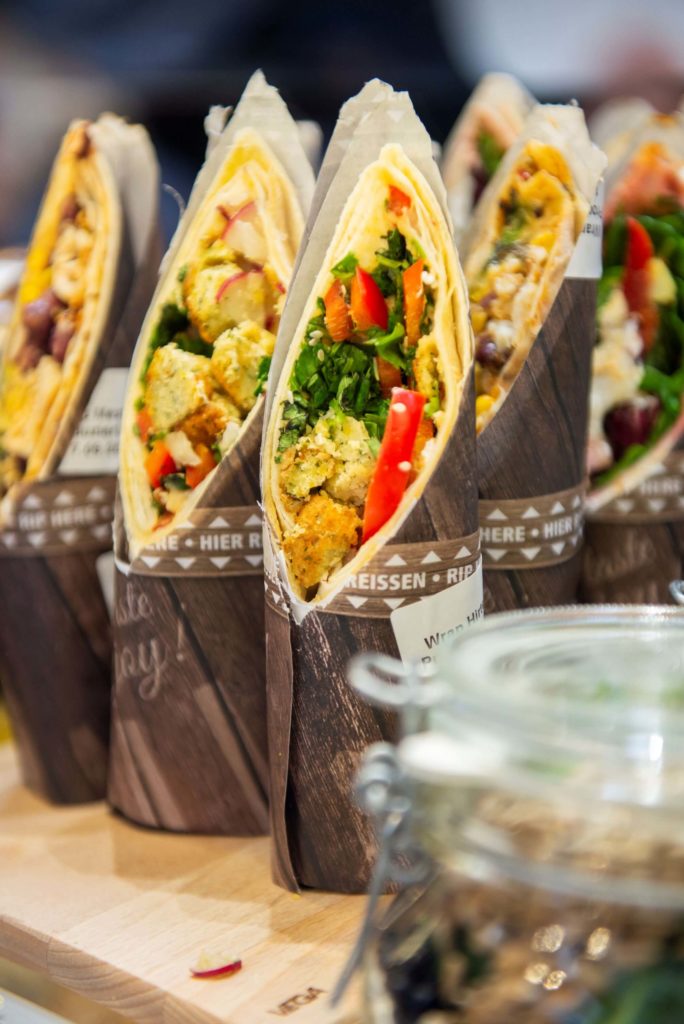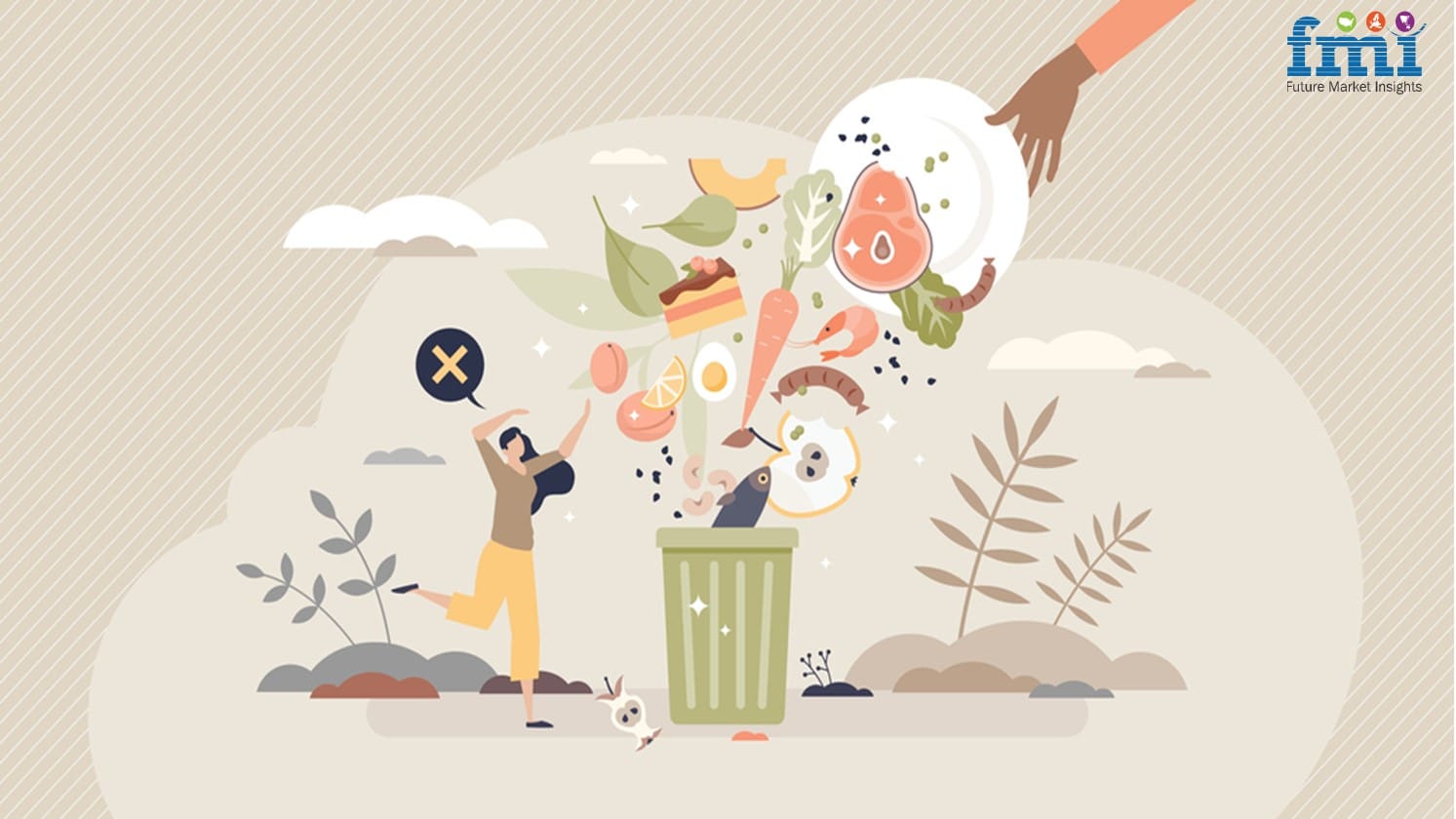What are the food trends of the future? What expectations do customers have from tomorrow’s bakery counters?
Along with artisan bakery, digitalization and sustainability, food trends is the fourth focus topic at the trade fair in October: we talked beforehand to Karin Tischer, founder of food & more, about the trends that are emerging around the world and how you can discover them on the iba. FOOD TRENDS TOURS.
For 27 years, food & more has been working for national and international customers from industry, trade, the outof-house market and b2b partners, in particular for bakery, confectionery and coffee bar chains, snack suppliers and the baked goods industry.

The research institute develops new innovations and recipes, customised bakery concepts and offers creative workshops, strategy consultations and trend lectures.
We spoke to Karin Tischer, trend researcher, food specialist and managing director of food & more in Kaarst, about current and upcoming food trends in the baking industry.
Among other things, you deal with trends, consumer needs and potential in the baking industry. There have probably been a lot of changes here in recent years due to the pandemic. What food trends have emerged in 2023?
Karin Tischer: I see four major trend themes: digitalisation, health orientation with indulgence, news from the trend booster Food & Beverage, as well as sustainability.
Can you give us a bit more detail?
Karin Tischer: Of course. Digitalisation is on the fast track, including robotics and online ordering and payment solutions. Innovative developments are particularly happening in the field of artificial intelligence (AI), such as in food waste, baking robots and new checkout systems with AI product recognition. Deliveries and ghost kitchens are increasing, due to more working from home, among other aspects.
Digital communication has also changed a lot – customers see what they would like to have online, then want to order and pay with their smartphones. Another idea is the staffless mini-bakery, like the Lila Bäcker in Neubrandenburg.

A pick-up store open 24/7: a vending machine where you can directly select the baked goods and pay cashless. These days, bakeries absolutely have to be active on social media, signature products must be “Instagrammable”.
Trend topic number two is health with indulgence. People have become more health conscious. A broad majority of the population is opting for a more plant-based diet with less meat and fish as part of being more healthy. We speak here of “plantarism”. Customers expect more vegan and vegetarian alternatives.
Tastes are also slowly changing, in a kind of silent revolution. With a plant-based diet, however, many miss the original taste of meat and co. Meeting consumers’ tastes is an even greater challenge than it was before.
As far as the Food & Beverage trend booster is concerned, snacking, breakfast and street food are the mega trends. Breakfast is available around the clock without being restricted to mornings. Among other things, the egg is the centre of attention here, because consumers love eggs and like to go out for breakfast.
Whether it’s shakshuka, Turkish eggs or simply spread on bread – eggs offer great variety for breakfast and snacking. Plus there are also vegan and vegetarian alternatives. Large slices of lavishly topped and beautifully presented bread are also in vogue. Unusual drinks, like cheese tea originating from Asia: iced tea with whipped cream cheese, similar to a smoothie.
The trend topic of sustainability has become the DNA and image factor for numerous companies: sustainable, regional and fair concepts are successful. In particular, the attribute “from the region” is gaining in importance and overtaking “organic”.
Consumers are also paying more attention to sustainability and short distances when it comes to packaging. Indoor farming has become more established: microgreens, herbs and lettuce are grown in a kind of mini-greenhouse directly in the restaurant – this also works in the bakery café. You can’t get much fresher than that!
Do these trends apply nationally and internationally or are there differences here? Are there any trends that exist globally?
Karin Tischer: All four trends play an international role, although the prioritisation varies. Internationally, indulgence, new flavours and snacks are a big topic. When it comes to baked goods, Germany offers the largest variety of bread in the world and customers are also open to new things, from Italian focaccia to Asian bao buns.
Home-made style Mediterranean pastries are mega trendy. In Germany, we have a very high level of baking expertise and also a large, transitioning breakfast culture. Young people in particular appreciate dishes like porridge, muesli bowls, granola and overnight oats.
Coffee also has trend potential – such as Bumble Coffee, an espresso with fresh orange juice on ice. Or unusual, colourful drinks with super foods, like lattes with matcha, beetroot or butterfly pea powder. “Coffeetails” are also popping up everywhere.
How has customer buying behaviour changed and what do consumers expect at the bakery counters of today and tomorrow?
Karin Tischer: Consumers do not want to sacrifice indulgence and pay more attention to regionality. If they are forced to choose, then regional trumps organic. Many customers rely on a plant-based diet. Younger customers prefer more protein snacks or mueslis.
Sustainable packaging is also vital. At the counter, customers are looking for freshness and home-made style, such as sourdough breads with a long shelf life. Bread can be rustic, but the crust shouldn’t be too hard.
However, customers have become even more price-aware, so it mustn’t be too expensive either. Meat is on the decline, except for chicken. As vegan / vegetarian alternatives, there are now more and more protein alternatives, e.g. fermented mushrooms.
How have bakeries (snacks & to go) expanded their offer and to what extent does “individualisation” play a role here?
The range on offer has changed, especially in snacks, there are lots of vegan and vegetarian alternatives. It depends on the place, whether it is the city, a frequented location or the countryside, etc. People like convenience and want to get sandwiches with fresh ingredients like lettuce or salad, vegetables or herbs, meaning new creations and making it easy for themselves.
Fresh fruit and salad, cream cheese, varied toppings – such as falafel, cheese or hummus and a sophisticated finish of microgreens, seeds or nuts replace the “traditional sandwich”. Comfort food like hot porridge, overnight oats, muesli or granola is also in demand.
You see more and more “cups” that are nice to eat. We have also studied this psychologically – when you eat something from a bowl with a spoon, it is a kind of peaceful, primal nutrition, like mother’s rice pudding in the past, for example. It’s easy to eat and uncomplicated.
Which aspects and topics play an important role for the baking industry, especially on the company and business side?
Karin Tischer: Cost efficiency, use of personnel and raw materials are key factors here. Due to the lack of staff and skilled workers as well as the increased prices for energy and raw materials, working economically is a great challenge.
But we mustn’t save too much or raise prices too distinctively, because consumers won’t tolerate that. Key products with USP and storytelling, so-called signature products, are in demand. Less is more. Businesses in the baking industry need to think about what makes them special.
They need to clearly differentiate themselves from their competitors: What makes me unique? Who is my target group? How can I be more sustainable?People are more and more interested in this.
At iba, you will be giving tours on food trends yourself. What will this entail? When will the iba.FOOD TRENDS TOURS be taking place and where can people sign up?
Karin Tischer: On every day of the fair (except Tuesday), I will be leading a trend tour through the fair. Participants can look forward to a compact, short culinary tour that will give them an overview of the hottest food & beverage trends at iba.
We will visit six to seven exhibitors and get tastings as well as information. Of course I will be available for questions on trends and market developments. I will be speaking during the tour via microphone, all participants receive headphones, and there will be simultaneous translations into English.
A tour lasts about two hours (from 11am to 1pm) and is free of charge. A maximum of 20 participants can sign up. Registration is done here: www.iba-tradefair.com/registrationibatours – on a first come, first serve basis.
If you can’t make it to the tour, you can come to the iba.SPEAKERS AREA on Sunday 22 October (5 – 5:30pm) or Thursday 26 October (2:30 – 3pm) where I will be speaking about the current international food & beverage trends. In addition, I will be hosting the panel discussion on Tuesday 24 October from 5:30 – 6pm on the topic of “7 versus 19% VAT for meals in the catering industry as well as in cafés and snack providers at the end of 2023” with industry-known protagonists.





